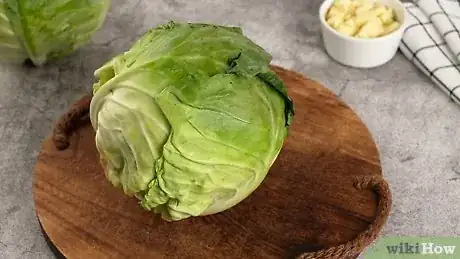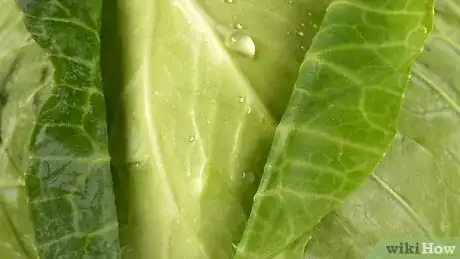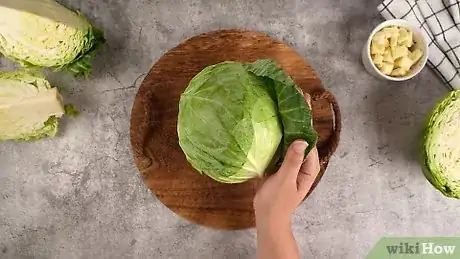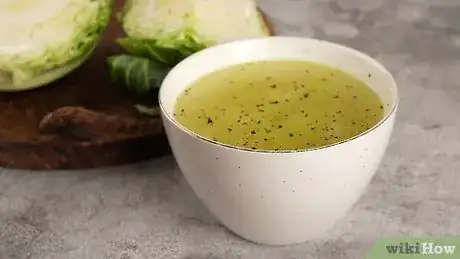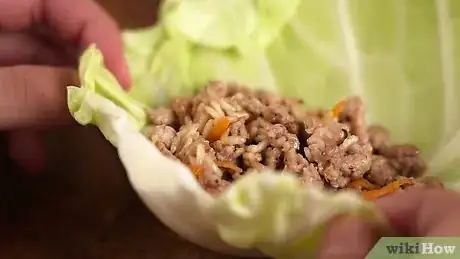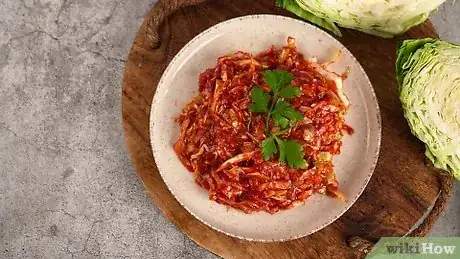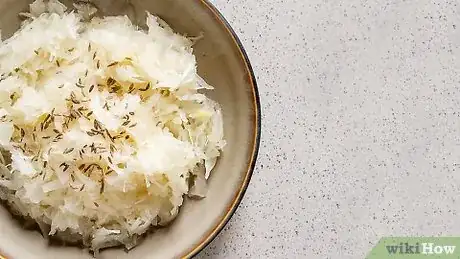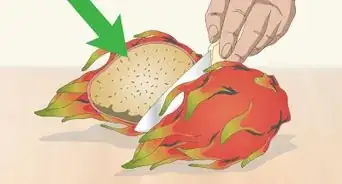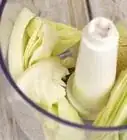This article was co-authored by Jerran Boyer. Chef Jerran Boyer is a Nutrition-Focused Professional Chef and the CEO of Health Nut Chefs. Chef Jerran has over 20 years of experience as a private chef. She and her team specialize in providing healthy, fresh-prepared meals designed with each client’s taste and dietary needs in mind. She and her team offer both personal, part-time chef services and private, full-time chef services in New York, New Jersey, and the Los Angeles area. Chef Jerran received her BS in Business Administration from the University of South Florida, a degree in Culinary Arts from Florida Culinary Institute, and a Plant-Based Nutrition Certificate through Cornell University.
This article has been viewed 143,518 times.
Cabbage is a modest vegetable that doesn't boast about the fact that it is a central part of dishes the world over. wikiHow, however, is speaking up for the bashful cabbage. Selecting and storing cabbage is not difficult, but choosing what you'll make with this veggie is a whole different story.
Steps
Selecting Cabbage
-
1
-
2Feel the outside to make sure that the cabbage is firm to the touch. If you feel a cabbage and it feels soft and spongy rather than firm and dense, your cabbage might be rotten on the inside. Only pick out cabbages that are firm or hard to the touch.Advertisement
-
3Pay attention to the leaves. When you are picking out a cabbage, look for cabbages that only have a few leaves hanging free from the rest of the head. If your whole cabbage looks like its come a little undone, and there are many leaves that are not tightly pressed to the stem (or center) of the cabbage, that cabbage might have a weird texture or flavor.
- You should also look for leaves that are crisp rather than soft. Soft leaves means that the cabbage is a little old or has had damage done to it.
-
4Avoid any cabbages that show signs of discoloration or rotting. If the leaves are heavily damaged or there are a lot of blemishes (dark spots) on the cabbage, you should not buy it. These characteristics are generally associated with worm damage.[2]
-
5Know the difference between large and small heads of cabbage. Generally, larger heads of cabbage will have a milder flavor than smaller, more compact heads of cabbage. If you are new to eating cabbage or are trying to get yourself to like it, pick larger heads that will hit you with less of that cabbage-y flavor.
- You should also keep in mind that a cabbage picked after a frost will be sweeter than one picked before a frost. If you are purchasing your cabbage from a farmer's market, ask the person selling cabbage if their farm has had a frost yet.
Storing Cabbage
-
1Keep your cabbage whole until you plan to use it. When you cut cabbage, it begins to lose its vitamin C.
- If you absolutely must store part of a cabbage, wrap it tightly in plastic wrap and store it in the refrigerator for up to two days.[3]
-
2Store the cabbage in the crisper of your fridge. Keeping your cabbage cold will help it retain its nutrients and crisp texture. Place it inside a plastic bag first. It should stay in satisfactory condition for up to two weeks.
- If you have purchased Savoy cabbage, store it in your refrigerator for no more than one week. Use it after the week is up or else it will begin to go bad.
-
3Discard the outer leaves before you use your cabbage. This is especially important if any of the leaves have withered during storage or travel. Rinse the leaves and use as required. Enjoy!
Ideas for Cooking Cabbage
-
1Try making cabbage soup. Not only is cabbage soup tasty, it is also the center of a new diet trend.
-
2Make stuffed cabbage for dinner. Gołąbki, or golumpki in English, is a traditional Polish dish that will want to make you want to say hurrah (hooray in Polish).
-
3Try some Halwa. Are you looking for something sweet? Look no further than cabbage Halwa. Halwa is a type of sweet confection that can be found in Central Asia, South Asia, the Middle East, India, and the Balkans.
-
4Try some braised cabbage. Not only is braised cabbage delicious, nutritious and vegan, it’s also Russian! You should try it.
-
5Pair pork chops with red cabbage. These two go together like salt and pepper, ketchup and mustard, or Butch Cassidy and the Sundance Kid.
-
6Make your own sauerkraut. Why settle for the store bought, processed sauerkraut when you could make your own out of fresh cabbage?
Expert Q&A
-
QuestionHow do you preserve cabbage for long term storage?
 Jerran BoyerChef Jerran Boyer is a Nutrition-Focused Professional Chef and the CEO of Health Nut Chefs. Chef Jerran has over 20 years of experience as a private chef. She and her team specialize in providing healthy, fresh-prepared meals designed with each client’s taste and dietary needs in mind. She and her team offer both personal, part-time chef services and private, full-time chef services in New York, New Jersey, and the Los Angeles area. Chef Jerran received her BS in Business Administration from the University of South Florida, a degree in Culinary Arts from Florida Culinary Institute, and a Plant-Based Nutrition Certificate through Cornell University.
Jerran BoyerChef Jerran Boyer is a Nutrition-Focused Professional Chef and the CEO of Health Nut Chefs. Chef Jerran has over 20 years of experience as a private chef. She and her team specialize in providing healthy, fresh-prepared meals designed with each client’s taste and dietary needs in mind. She and her team offer both personal, part-time chef services and private, full-time chef services in New York, New Jersey, and the Los Angeles area. Chef Jerran received her BS in Business Administration from the University of South Florida, a degree in Culinary Arts from Florida Culinary Institute, and a Plant-Based Nutrition Certificate through Cornell University.
Nutrition-Focused Professional Chef Well, it's easy. Fresh cabbage can be wrapped in paper towels, then stored in an airtight zip bag or container in the refrigerator.
Well, it's easy. Fresh cabbage can be wrapped in paper towels, then stored in an airtight zip bag or container in the refrigerator. -
QuestionHow can I make more tender, softer cabbage?
 Community AnswerTry chopping the cabbage into smaller pieces and cooking it for a longer period of time with a closed lid.
Community AnswerTry chopping the cabbage into smaller pieces and cooking it for a longer period of time with a closed lid. -
QuestionIs cabbage okay to eat if you take the dark parts out and cook the green portion?
 Community AnswerThe whole of the cabbage is safe to eat, and in fact, the dark parts contain the most vitamins.
Community AnswerThe whole of the cabbage is safe to eat, and in fact, the dark parts contain the most vitamins.
Expert Interview
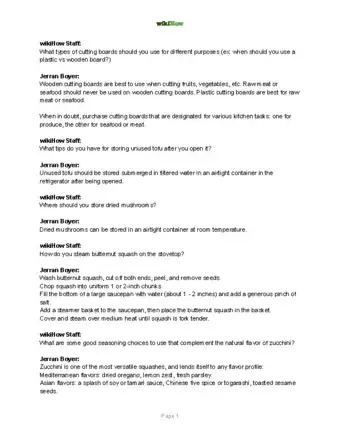
Thanks for reading our article! If you'd like to learn more about storing food, check out our in-depth interview with Jerran Boyer.
References
About This Article
To store cabbage, wrap it tightly in plastic wrap if it's been cut already, or put it in a sealable plastic bag if it's still whole. Then, store the cabbage in the crisper drawer in your fridge for up to 2 weeks. When you're ready to use the cabbage, peel off the outer leaves so you're only eating the freshest parts of the vegetable. If you want to learn how to sort through any bad leaves on your cabbage, keep reading!
